Different Roof Types & Shapes
If you are like anyone else, you have seen a if not many roofs on a homes in the past. With all of the roofs that you have seen, they each have their own name and description. Here in this post we will talk about all of the different roof types and how they are built.
Must Shed Water
Before going into all of the different roof types we want to make sure of one very important thing. One of the main purposes that a roof serves is to shed water. A roof surface should have a pitch or a slope as some may call it. Because a roof has a slope, the water will cascade down towards the ground and off of the roof. Having said that, we will look at all of the different roof types.
Roof Types And Descriptions
 Lean-To Roof
Lean-To Roof
This is a simple design usually a one sloped roof type that starts at the top being attached to another roof or wall and then sloping down. A lean-to roof is a roof that is added to an existing roof structure. One can say that it is leaning on the existing structure to hold it up hence that is where it got it’s name from.
You will often see these types of roofs when an addition for storage is added to one side of a garage for instance. The lean-to roof style is not a stand alone roof, it leans-to some other structure.

Gable Roof
This is by far one of my personal favorite roofing types as it is simple and functional. This type of gable roof consists of two slopes that are of equal size and length. They are usually matching slopes that are nearly identical however they are sloped in the opposite directions from each other.
They start at the top (ridge) and then slope down to the wall edge and or stop at the fascia boards. A gable roof has vertical wall with siding at the two gable ends meaning that there is a peak in the siding wall following the roof up. Steeper gable roofs with a pitch of 9″ on 12″ and above are great for shedding snow loads in cooler climates as snow will often just slide off.
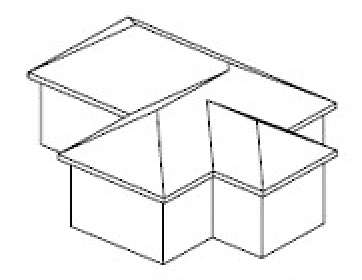 Hip Roof
Hip Roof
A hip roof is a common roof type that you see on many newer homes today. They can be seen on one and two story homes. A hip roof has all it’s angles (sides) slope down to the load bearing exterior walls and often end at the same level.
This roof type starts at a peak, (highest point) and then slopes downward towards the end of its slope at the fascia board where it stops. A hip roof can have valleys if there are several hips with an internal corner meeting at one level fascia. There are no gable ends with a hip roof.
 Dutch Gable Roof
Dutch Gable Roof
A dutch gable roof is an interesting combination roof type used commonly one one story homes. The dutch gable roof is in essence a hip roof as it comes down level at the fascia boards with a small gable at the top end of the roof. Often times a gable vent will be installed at the ends to provide ventilation in the attic.
This is a more common roof in warmer climates as it is often lower pitched with a larger soffit overhang ranging in 16 – 24 + inches. This larger overhang (soffit) provides more shade for the windows and walls to keep the home coller.
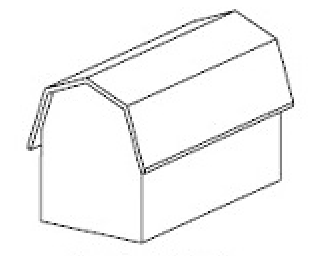 Gambrel Barn Roof
Gambrel Barn Roof
This is an interesting roof as it is often seen as a barn roof as homes across the U.S. will have a barn with this type of gambrel roof. The term dutch roof is often used here in the states. It has 4 slopes where two of them (the lower) are steep like a mansard and the other two (the uppers) are shallow in angle.
This roof type is similar to a gable roof as it has a vertical wall with siding on the two gable ends but with one other added angle at the top. This type of roof makes for a larger attic space due to the steeper roof acting as a side wall pushing up the attic space making it perfect for barn usage. Most commonly called a barn roof in the U.S.
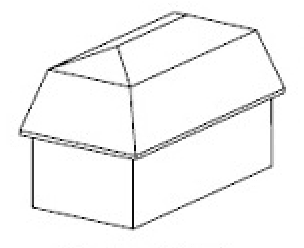 Mansard Roof
Mansard Roof
A mansard roof unlike the gambrel above has a shallow roof and a much steeper roof combination. This roof type is similar in that has a shallow pitch angle roof on the top and a steeper roof pitch angle on the bottom. However unlike the roof above, the mansard roof is like a hip in that it comes down on all sides level with the fascia boards.
Sometimes the top upper level roof can not be seen when close to a home with this type of mansard roof. This type of roof also makes for a larger attic space above that can be habitable due to the steeper roof acting as a side wall pushing up the newly created habitable space. The mansard roof has no gable ends.
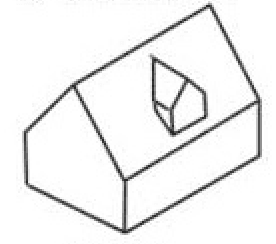 Dormer Roof
Dormer Roof
A dormer roof is an area that is protruding out of a roofing surface. They will often have a window or door mounted in its front. This is common in a loft or attic space to have a dommer constructed with a window to let in lite and allow for egress (escape) for fire and other purposes.
This doomer roof can also be called a dog house dormer. A dormer roof is a general term. The reason being is the roof on top of the dommer can have many styles (types) to that roof. For Instance, shed, hip, gable, eyebrow etc.
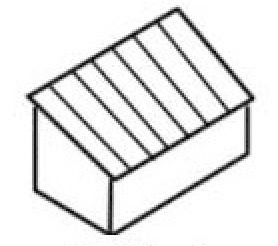 Shed Roof
Shed Roof
This shed roof type is very much like the lean-to roof that we described above. However there is a big difference. The lean-to roof is supported by another structure. The shed roof style is a stand alone roof. It will not need to be attached to another structure.
It is a one sloped roof that is sloped down from one higher end of a wall to the lower end. A shed roof usually has only one sloped surface area.
Helpful Roofing Types and Shapes Links
Roofing Cost Estimator – 15 Roof Types
MorningChores – Types of Roofs
Conclusion
If you are going to build a home and or a smaller project, we hope that you have found this roof types article helpful. Thank you, Greg at Texas Home Exteriors INC.



Here there to my folks over in Texas. Hope all is well after the flooding.
Jerold,
Yes the Houston Texas metro area took on way too much water and flooding was a major issue. Thanks for your concern.
Greg